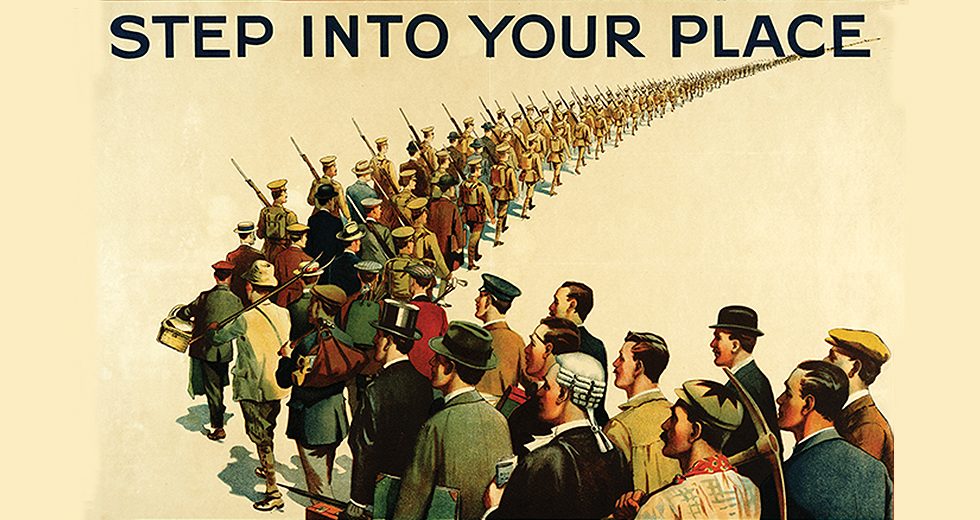
Bassoon Walter Guetter (1895–1937) was hired by Frederick Stock in 1915, after auditioning at Willow Grove Park, where the Chicago Symphony Orchestra regularly performed summer concerts. He was promoted to principal bassoon during his second season and temporarily left the Orchestra in 1918 to serve in the U.S. Navy at the Great Lakes Naval Training Station. After the war, Guetter returned to the principal chair through 1922 until he was invited by Leopold Stokowski to join the Philadelphia Orchestra, also as principal bassoon.
Wendell Hoss (1892–1980) joined the Chicago Symphony Orchestra’s horn section in June 1917 for the Ravinia Park and subsequent downtown seasons, and he joined the U.S. Navy the following summer, serving at the Great Lakes Naval Training Station. After his year in the Navy, Hoss played in the Los Angeles Symphony Orchestra and the Cleveland Orchestra before returning to Chicago for one season as principal horn in 1922–23. He later taught at the Eastman School of Music, performed in the Disney recording studios, and was a co-founder of the International Horn Society.
Czechoslovakia native Otto Hyna (1886–1951) emigrated to the U.S. in 1904 and later served in the National Guard as a member of the First Wisconsin Regiment of Field Artillery in 1917. Following his military service, he was principal bass of the Minneapolis Symphony Orchestra from 1921 until 1923. Hyna joined the Chicago Symphony Orchestra’s bass section in 1930, where he remained until 1950. Otto’s brothers Edward and Henri also were members of the Orchestra’s string section. Edward (1897–1958) served as a violinist from 1929 until 1943, and Henri (1901–1955) also was a violinist from 1928 until 1932.

Fort Sheridan Water Tower in 1898 (Detroit Photographic Company image)
For the final concert of the 1917–18 season, Frederick Stock opened the concert with America and closed with his Festival March and The Star-Spangled Banner. A new stage decoration recognized musicians serving the U.S. military. The article is here.
Frederick Stock led the Orchestra in a concert at Fort Sheridan on October 21, 1917. According to the Chicago Tribune, Company 21 celebrated after the concert with a dinner that included: “Turkey à la Cook (in honor of company commander Captain Louis H. Cook), oyster dressing à la Smith (in honor of company instructor Captain Horace Smith), first platoon gravy, Murphys [potatoes] à la pick and shovel, shrapnel peas, dugout olives, bayonet celery, grenade cranberry sauce, trench coffee, [and] periscope pie . . .” The article is here.
During the 1919–20 season, Frederick Stock inaugurated three major initiatives to cultivate future generations of musicians and concertgoers: a regular series of Children’s Concerts, Youth Auditions, and the Civic Music Student Orchestra.
One of the goals of the Civic Orchestra was “to reduce the dependence of this country upon European sources of supply for trained orchestral musicians” as well as to function as a reserve of talent from which to draw into the Chicago Symphony Orchestra. The article is here.
Five hundred young musicians auditioned in January 1920, eighty-six were accepted, and the first rehearsal was held in Orchestra Hall on January 27.
The ensemble made its debut on March 29, 1920, and the roster included future Chicago Symphony Orchestra members (including John Weicher, who became concertmaster in 1937). Frederick Stock, Eric DeLamarter, and George Dasch (also a member of the Orchestra’s violin and viola sections from 1898 until 1923) shared conducting duties, leading works by Halvorsen’s Triumphal Entry of the Boyards, Godard’s Adagio pathétique, Tchaikovsky’s Fifth Symphony, Grieg’s Suite no. 1 from Peer Gynt, Keller’s Souvenir and Valse, and one of Elgar’s Pomp and Circumstance marches.
____________________________________________________
A Time for Reflection—A Message of Peace—a companion exhibit curated by the Rosenthal Archives of the Chicago Symphony Orchestra in collaboration with the Pritzker Military Museum & Library—will be on display in Symphony Center’s first-floor rotunda from October 2 through November 18, and the content also will be presented on CSO Sounds & Stories and the From the Archives blog.
This article also appears here. For event listings, please visit cso.org/armistice.
This exhibit is presented with the generous support of COL (IL) Jennifer N. Pritzker, IL ARNG (Retired), Founder and Chair, Pritzker Military Museum & Library, through the Pritzker Military Foundation.
Additional thanks to Shawn Sheehy and Jenna Harmon, along with the Arts Club of Chicago, Newberry Library, Poetry Foundation, and Ravinia Festival Association.
TOP: Step into Your Place, David Allen & Sons. A recruitment poster shows men in civilian attire falling into formation, joining ranks of soldiers marching into the distance (England, 1915). | Image: Pritzker Military Museum & Library





